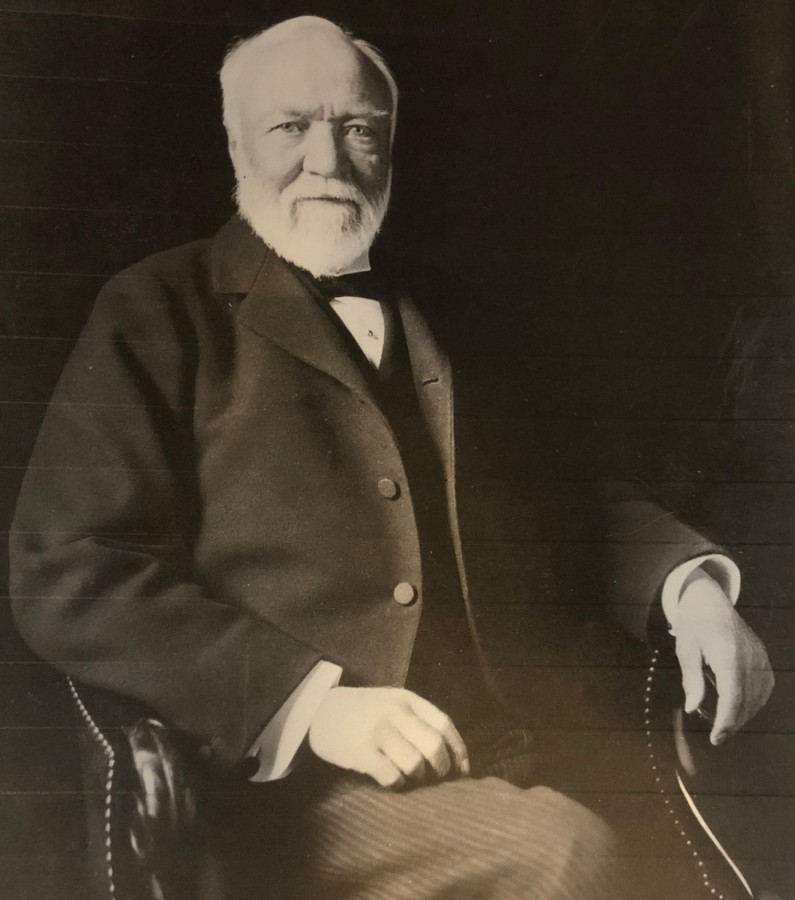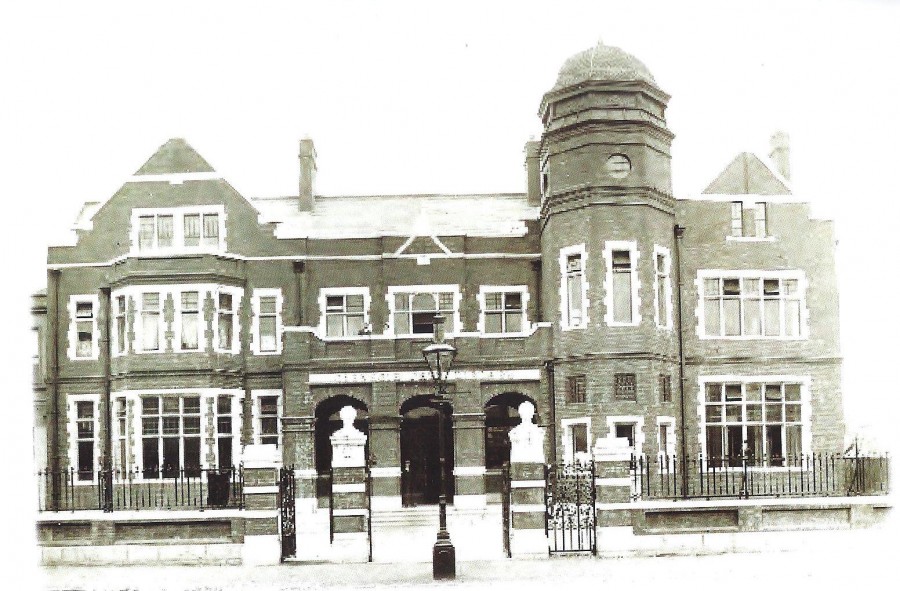
Kieran’s Our City, Our Town Article,
Cork Independent, 1 August 2019
Tales from 1919: Death of a Library Philanthropist
On 11 August 1919, almost one hundred years ago, a good friend of Cork’s library service passed away in Lennox, Massachusetts, USA. Mr Andrew Carnegie, funder of many Irish libraries and Cork City Library passed away after a brief illness – after contracting bronchial pneumonia. Mr Carnegie was born at Dunfermline in Scotland on 25 November 1835 and emigrated to the United States in 1848. He settled in Pittsburgh and was for thirteen years in the service of the Pennsylvania Railroad Company. He worked for some time as an iron moulder, rising stop by step until he controlled great steel rolling mills in that city.
Andrew acquired immense wealth and then came to the conclusion that wealth was simply held in trust for the benefit of the community. He conceived the idea that the best way to benefit the community was by educating them, and as all could not attend high schools or universities, he endowed libraries, believing in the concept that the best university was a good library.
Not only did he give funding towards to the foundation of libraries, he gave immense sums for education in Scotland and America and built and endowed the Peace Palace at The Hague. He also founded the Carnegie Hero Fund for the recognition of bravery in saving life. When he retired from active participation in business, Andrew Carnegie wrote several volumes, including An American Four-in-Hand in Britain (1883), Round the World (1884), Triumphant Democracy (1885), The Gospel of Wealth (1901), The Empire of Business (1902), Life of James Watt (1905), and Problems of Today (1908).
The announcement of Mr Carnegie’s death on 11 August 1919 was received with feelings of deep regret in Cork City and several parts of Munster. Throughout, the south of Ireland many people were in receipt of the awards made by the Carnegie Hero Fund. Numerous acts of bravery have been recognised by this Fund and gifts in recognition made.
Andrew Carnegie invested though in 660 public libraries across Britain and Ireland alone at the turn of the twentieth century. On 21 October 1903 the foundation stone of the Cork Carnegie Library was laid by Andrew Carnegie and afterwards on the same day he received the Freedom of the City. Andrew’s action in providing the citizens of Cork with a sum of £11,000 for the erection of the library at Anglesea Street, and a sum of £1,000 towards the furnishing of the building was greatly appreciated. The new library was to replace a public library (est. 1892) within the School of Art on Nelson’s Place. The new Carnegie Library was located on Anglesea Street next to Cork City Hall and had a lifespan for only 15 years, until 1920.
A description in the Cork Examiner in 1905 describes that the style was Elizabethan with an elegant front with a beautiful entrance, balcony, and tower as added attractive features. At the main entrance from Anglesea street was a vestibule, which opened into a large open hall, the floor of which was laid as a terrazzo executed by Italian workmen. Beyond this and in line with the entrance was “the lending department, furnished in the most up-to-date manner”.
The central portion of the building was lit mainly from the roof light. To the left, of the lending Library was the newsroom. Lined along the sides with neatly designed newspaper stands, the floor space being occupied by tables for the renders. The corresponding area to the left of the lending department was devoted to the reference library. A space in the southern side was partitioned off into a storeroom or workplace for the library attendant. Flanking the entrance on the ground floor were the librarian’s offices on the left, and the ladies’ rending room on the right, and over these respectively were the Librarian’s apartments and the juvenile reading room.
The Library was lit by gas and specially designed pendants and brackets were fitted up in the reading rooms for the comfort of patrons. The heating and ventilation were on the Plenum system – the heating chamber being at the northern side of the library adjacent to the Municipal Buildings. The heated air was controlled by means of a fan driven by an electric motor and was taken by underground ducts to the various rooms. Practically the entire sum of £11,000, which Mr Carnegie provided for the establishment of the Library was been absorbed into the work.
On 12 December 1920 the Carnegie Free Library on Anglesea Street in Cork was destroyed by a fire — lit by Black and Tans, members of the British Crown Forces — as well the adjoining City Hall, and large sections of the city centre especially St Patrick’s Street. The burning of the Library left the city without a public library service until 1924, when premises were provided on a temporary basis for a library in Tuckey Street. That service was transferred in 1930 to new premises behind a new Hiberno-Romanesque facade at nos. 57-8 Grand Parade.
The redevelopment of the library service in the 1920s was due largely to the herculean efforts of the then librarian, James Wilkinson. Post the 1920 burning, James Wilkinson issued an appeal for book donations which yielded an extraordinarily generous response from the national and international community. The accession ledgers in which acquisitions to stock were recorded continue to be housed by the Central Library’s Local Studies Department and make for fascinating insight into the history of reading in Cork City.
Captions:
1008a. Andrew Carnegie, 1913 (source: Cork City Library)
1008b. Carnegie Library, Anglesea Street, Cork, c.1900 (source: Kieran McCarthy)
